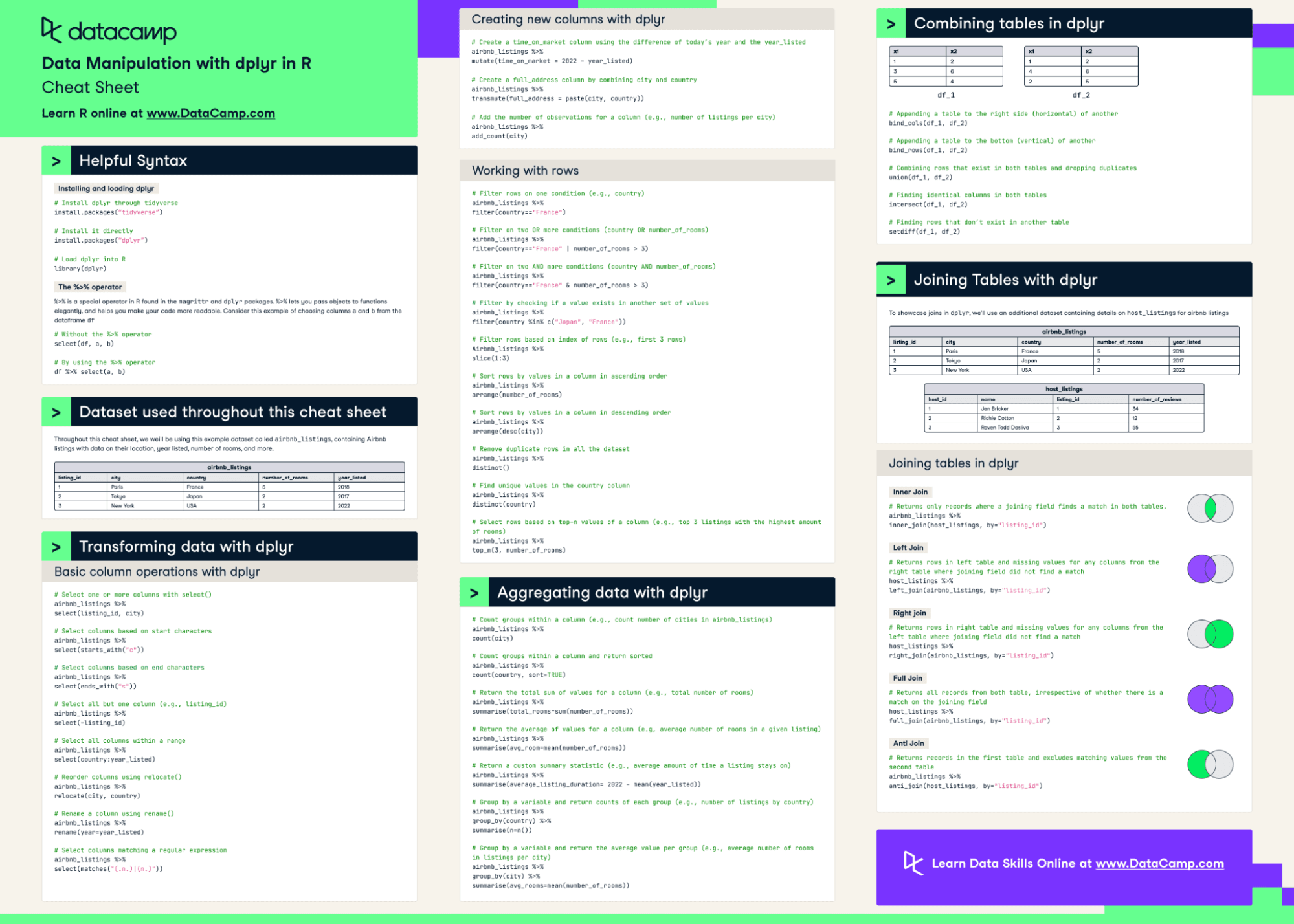Data Manipulation with dplyr in R Cheat Sheet
With this data manipulation with dplyr in the R cheat sheet, you'll have a handy reference guide in your R upskilling journey.
Aug 2022 · 7 min read
RelatedSee MoreSee More
Data Science in Finance: Unlocking New Potentials in Financial Markets
Discover the role of data science in finance, shaping tomorrow's financial strategies. Gain insights into advanced analytics and investment trends.
Shawn Plummer
9 min
5 Common Data Science Challenges and Effective Solutions
Emerging technologies are changing the data science world, bringing new data science challenges to businesses. Here are 5 data science challenges and solutions.
DataCamp Team
8 min
Navigating R Certifications in 2024: A Comprehensive Guide
Explore DataCamp's R programming certifications with our guide. Learn about Data Scientist and Data Analyst paths, preparation tips, and career advancement.
Matt Crabtree
8 min
A Data Science Roadmap for 2024
Do you want to start or grow in the field of data science? This data science roadmap helps you understand and get started in the data science landscape.
Mark Graus
10 min
Introduction to DynamoDB: Mastering NoSQL Database with Node.js | A Beginner's Tutorial
Learn to master DynamoDB with Node.js in this beginner's guide. Explore table creation, CRUD operations, and scalability in AWS's NoSQL database.
Gary Alway
11 min
How to Transpose a Matrix in R: A Quick Tutorial
Learn three methods to transpose a matrix in R in this quick tutorial
Adel Nehme
